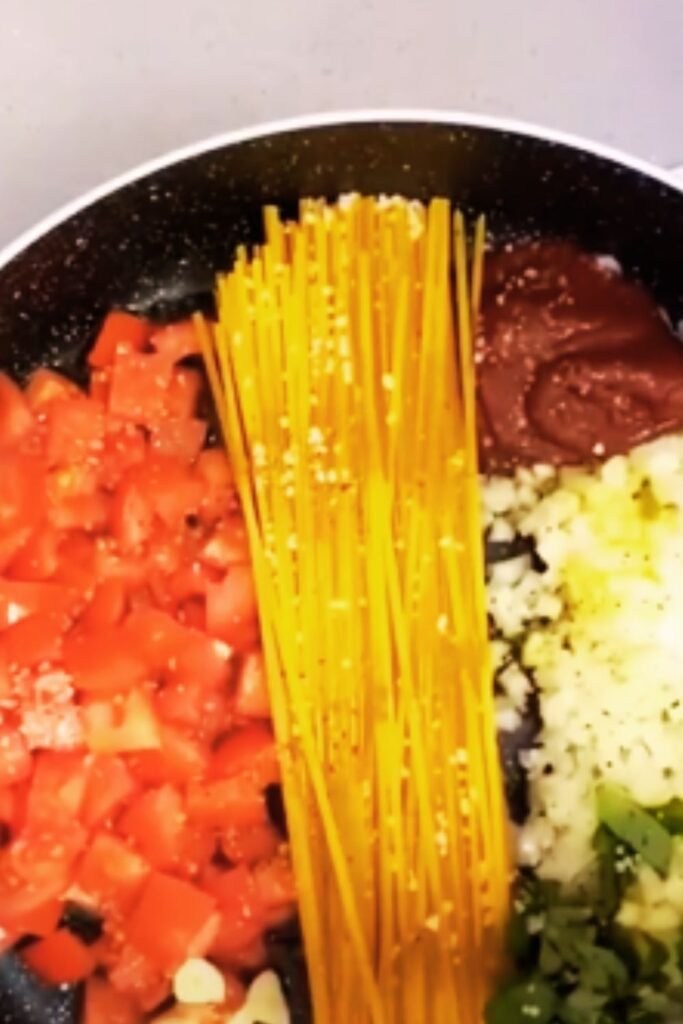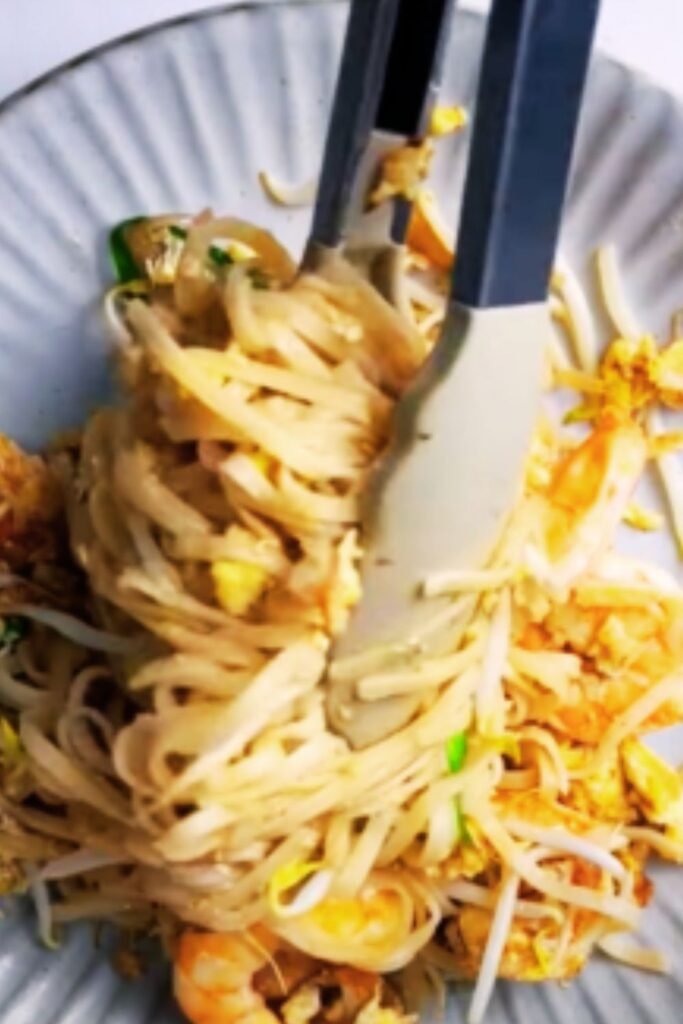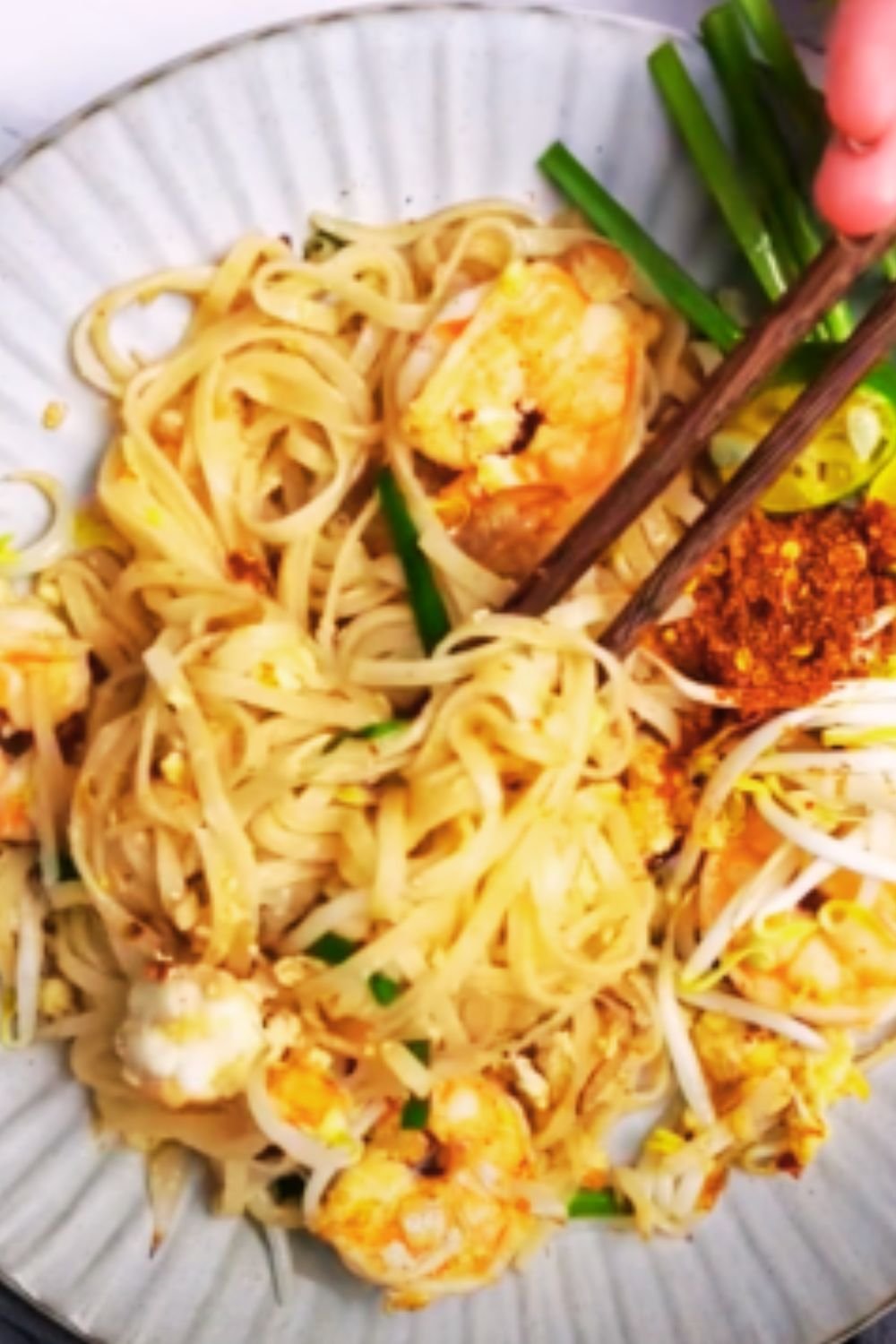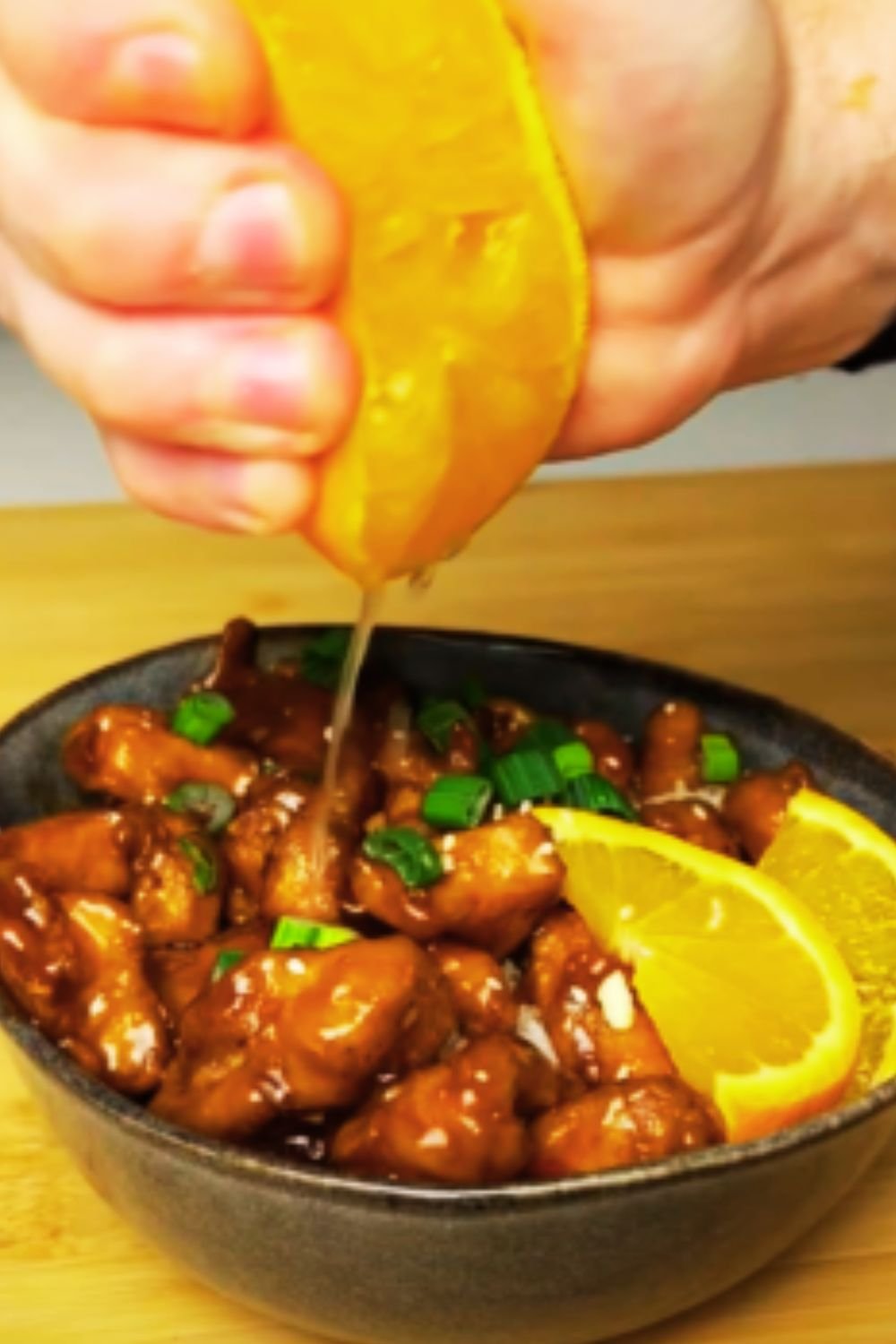There’s something magical about Thai cuisine that always leaves me craving more. The perfect balance of sweet, salty, sour, and spicy flavors creates a symphony in your mouth that’s hard to replicate with any other cuisine. Today, I’m sharing one of my absolute favorite weeknight recipes: One Pot Spicy Thai Noodles. This dish has saved me countless times when I’m short on time but still want something bursting with flavor.
I discovered this recipe during my travels through Northern Thailand. After spending a morning learning from a local chef in Chiang Mai, I was determined to create a simplified version that could be made in just one pot without sacrificing those authentic Thai flavors we all love.
The beauty of this dish lies in its simplicity and adaptability. With just one pot, you’ll create a restaurant-quality meal in under 30 minutes. The noodles soak up all the aromatic flavors of the sauce, while the vegetables add freshness and texture. The protein—whether you choose chicken, shrimp, tofu, or keep it vegetarian—makes it a complete meal that will satisfy even the pickiest eaters.
What Makes These Thai Noodles Special?
What sets these one-pot noodles apart is the harmonious balance of Thai flavors and the convenience of the cooking method. Traditional Thai noodle dishes often require multiple pots and pans, but this version streamlines the process without compromising on taste.
The sauce is the heart of this dish—a perfect blend of sweet, salty, tangy, and spicy elements that coat every strand of noodle. The addition of fresh herbs at the end brings brightness and authenticity that will transport you straight to the streets of Bangkok.
Key Ingredients Explained
Before we dive into the recipe, let’s break down some of the essential ingredients that give this dish its distinctive Thai character:
Rice Noodles : Flat rice noodles (sometimes called rice stick noodles) are traditional in many Thai dishes. They cook quickly and absorb flavors beautifully. You can find them in most grocery stores in the international aisle.
Fish Sauce : This is a non-negotiable ingredient for authentic Thai flavor. Don’t be put off by the smell—when combined with other ingredients, it creates incredible umami depth without tasting fishy.
Thai Bird’s Eye Chilies : These small, fiery chilies pack serious heat. Adjust the amount based on your spice tolerance, but I recommend including at least one for authentic flavor.
Thai Basil : Different from Italian basil, Thai basil has purple stems and a slightly aniseed flavor that’s essential in many Thai dishes. If you can’t find it, regular basil will work in a pinch.
Coconut Milk : Adds creaminess and helps balance the heat. I recommend full-fat for the richest flavor, but light coconut milk works too.
Equipment You’ll Need
The beauty of this recipe is that you only need minimal equipment:
- A large, deep skillet or wok with a lid
- A sharp knife for chopping vegetables
- Measuring spoons and cups
- Wooden spoon or silicone spatula
The One Pot Spicy Thai Noodles Recipe
Ingredients
For the Sauce:
- 3 tablespoons fish sauce
- 2 tablespoons low-sodium soy sauce or tamari
- 2 tablespoons brown sugar
- 1 tablespoon rice vinegar
- 1 tablespoon sriracha (adjust to taste)
- 1 tablespoon fresh lime juice
- 1 tablespoon peanut butter (optional, for added richness)
For the Noodles:
- 8 oz (225g) flat rice noodles
- 2 tablespoons vegetable oil
- 4 cloves garlic, minced
- 1 tablespoon fresh ginger, grated
- 1-3 Thai bird’s eye chilies, thinly sliced (adjust for spice level)
- 1 medium onion, thinly sliced
- 1 red bell pepper, julienned
- 2 carrots, julienned or cut into matchsticks
- 1 cup snap peas or snow peas, trimmed
- 2 cups protein of choice (thinly sliced chicken breast, peeled shrimp, sliced tofu, or omit)
- 1/2 cup coconut milk
- 2 cups spinach or baby bok choy
- 3 green onions, sliced diagonally
- 1/4 cup fresh cilantro, roughly chopped
- 1/4 cup Thai basil leaves, torn if large
- 2 tablespoons roasted peanuts, chopped
- Lime wedges, for serving
Nutritional Information
| Nutrient | Amount (per serving) | % Daily Value* |
|---|---|---|
| Calories | 420 | – |
| Total Fat | 16g | 21% |
| Saturated Fat | 5g | 25% |
| Trans Fat | 0g | – |
| Cholesterol | 42mg | 14% |
| Sodium | 890mg | 39% |
| Total Carbohydrate | 53g | 19% |
| Dietary Fiber | 4g | 14% |
| Total Sugars | 9g | – |
| Protein | 19g | 38% |
| Vitamin D | 0mcg | 0% |
| Calcium | 78mg | 6% |
| Iron | 3mg | 17% |
| Potassium | 520mg | 11% |
*Percent Daily Values are based on a 2,000 calorie diet. Values based on chicken as protein choice.
Step-by-Step Instructions
- Prepare the noodles: Place the rice noodles in a large bowl and cover with hot (not boiling) water. Let them soak according to package directions until they’re pliable but still slightly firm (usually 5-8 minutes). Drain and set aside. Tip: Undercook them slightly as they’ll finish cooking in the sauce.
- Make the sauce: In a small bowl, whisk together all sauce ingredients until the sugar dissolves and the peanut butter (if using) is fully incorporated. Taste and adjust seasonings if needed. Set aside.
- Cook the protein: Heat 1 tablespoon of oil in a large, deep skillet or wok over medium-high heat. Add your protein of choice and cook until just done (about 3-4 minutes for chicken or shrimp, 2-3 minutes for tofu). Remove from the pan and set aside.
- Sauté the aromatics: In the same pan, add the remaining tablespoon of oil. Add garlic, ginger, and chilies, and stir-fry for 30 seconds until fragrant. Be careful not to burn the garlic.
- Add the vegetables: Add the onion and cook for 1 minute until it begins to soften. Add bell pepper and carrots, and cook for another 2 minutes. Add snap peas and cook for 1 more minute. The vegetables should be crisp-tender.
- Combine everything: Return the cooked protein to the pan. Add the drained noodles and sauce. Toss everything together gently using tongs or two wooden spoons, making sure the noodles are coated evenly with the sauce.
- Finish the dish: Pour in the coconut milk and add the spinach or bok choy. Cover and let simmer for 2-3 minutes until the noodles are fully cooked and the greens are wilted. The sauce should coat the noodles nicely but not be too soupy.
- Garnish and serve: Remove from heat and stir in half of the green onions, cilantro, and Thai basil. Transfer to a serving dish and top with the remaining herbs, chopped peanuts, and lime wedges.

Variations to Try
One of the reasons I love this dish is its versatility. Here are some delicious variations to try:
Protein Options
- Crispy Tofu: Press firm tofu to remove excess moisture, cut into cubes, toss with cornstarch, and pan-fry until crispy before adding to the noodles.
- Mixed Seafood: Try a combination of shrimp, scallops, and calamari for a seafood feast.
- Ground Pork or Chicken: Brown with the aromatics for a different texture.
- Vegetarian: Double up on vegetables and add mushrooms for meaty texture and umami flavor.
Vegetable Swaps
- Broccoli Florets: Add them with the carrots for added nutrition and texture.
- Mushrooms: Shiitake, oyster, or button mushrooms add earthy flavor.
- Bean Sprouts: Toss them in at the very end for added crunch.
- Zucchini: Julienned zucchini adds color and mild flavor.
Sauce Adjustments
- Extra Spicy: Add more bird’s eye chilies or a dollop of Thai red curry paste.
- Creamy Version: Increase coconut milk to 3/4 cup for a saucier, creamier dish.
- Extra Tangy: Add more lime juice and a teaspoon of tamarind paste.
- Sweeter Profile: Increase brown sugar to 3 tablespoons if you prefer a sweeter taste.
Time-Saving Tips and Tricks
As someone who often cooks after a long day, I’ve developed some shortcuts to make this recipe even quicker:
- Prep ahead: Chop all vegetables and make the sauce in the morning or the night before.
- Use pre-chopped vegetables: Many grocery stores sell pre-julienned vegetables that work perfectly.
- Quick-cooking proteins: Shrimp and thinly sliced chicken cook fastest.
- Keep staples on hand: I always have rice noodles, fish sauce, and coconut milk in my pantry for last-minute meals.
Common Mistakes to Avoid
Even the simplest recipes can go wrong. Here are some pitfalls to avoid:
- Overcooking the noodles: Remember they’ll continue cooking in the sauce. Drain them while they’re still slightly firm.
- Adding all vegetables at once: Different vegetables require different cooking times. Add them in stages as directed.
- Skipping the fish sauce: It’s essential for authentic Thai flavor. If you must substitute, try a combination of soy sauce and anchovy paste.
- Not tasting as you go: Thai cuisine is all about balance. Taste and adjust the sauce before adding it to the noodles.

Make-Ahead and Storage Tips
This dish is best enjoyed fresh, but you can prepare elements ahead of time:
- The sauce can be made up to 3 days in advance and stored in the refrigerator.
- Chop all vegetables up to 24 hours ahead and store in airtight containers in the refrigerator.
- Leftover cooked noodles will keep for 2-3 days in the refrigerator. They may absorb more sauce, so add a splash of coconut milk or chicken broth when reheating.
- I don’t recommend freezing this dish as the noodles and vegetables can become mushy.
Serving Suggestions
For a complete Thai-inspired meal, consider serving your one-pot noodles with:
- Fresh cucumber slices dressed with rice vinegar and a pinch of sugar
- A side of steamed edamame with sea salt
- Thai mango salad for a refreshing contrast
- Coconut water or Thai iced tea to balance the spice
- Fresh fruit like pineapple or mango for dessert

My Personal Tips for Perfect Thai Noodles
After making this recipe countless times, I’ve learned a few secrets:
- The key to authentic Thai flavor is balancing sweet, salty, sour, and spicy elements. Don’t be afraid to adjust the sauce to your preference.
- High heat and quick cooking preserve the crispness of vegetables and prevent noodles from becoming mushy.
- Fresh herbs make a huge difference. Never skip the cilantro and Thai basil at the end.
- When cooking for mixed spice preferences, keep it mild and serve extra sliced chilies, sriracha, or chili oil on the side.
Health Benefits of This Dish
Beyond being delicious, this one-pot meal offers several nutritional advantages:
- Balanced macronutrients: Contains carbs from noodles, protein from your chosen source, and healthy fats from coconut milk.
- Vegetable-rich: Provides various vitamins, minerals, and fiber from the colorful vegetables.
- Anti-inflammatory ingredients: Ginger, garlic, and chilies have natural anti-inflammatory properties.
- Gluten-free option: Use tamari instead of soy sauce to make it completely gluten-free.
- Customizable for dietary needs: Easily adapt for vegetarian, vegan, or protein-specific diets.
The Authentic Thai Experience: Cultural Notes
Thai cuisine is deeply rooted in the country’s culture and history. The balance of flavors in this dish—sweet, salty, sour, and spicy—reflects the Thai culinary philosophy of harmony and contrast. Traditionally, Thai meals are shared family-style, with multiple dishes placed in the center of the table.
In Thailand, noodle dishes like this are often enjoyed as street food, served in small shops or from vendors’ carts. The cook might prepare each serving individually in a blazing hot wok, customizing the spice level to the customer’s preference.
While my one-pot version simplifies the traditional process, it maintains the spirit of Thai cooking—creating complex flavors from simple, fresh ingredients.
Questions and Answers
Q: Can I make this dish less spicy but still flavorful?
Absolutely! Thai food doesn’t have to be fiery to be authentic. Reduce or omit the bird’s eye chilies and sriracha, and add just a pinch of crushed red pepper flakes for background warmth. The fish sauce, ginger, garlic, and fresh herbs will still provide plenty of flavor.
Q: What can I substitute for fish sauce?
While nothing perfectly replicates fish sauce’s unique flavor, a reasonable substitute is 1 tablespoon soy sauce mixed with 1/4 teaspoon anchovy paste or 1/2 teaspoon Worcestershire sauce per tablespoon of fish sauce. For a vegetarian option, use soy sauce with a splash of lime juice and a pinch of mushroom powder for umami.
Q: What type of rice noodles work best?
Medium-width flat rice noodles (about 1/4 inch wide) are ideal. These are sometimes labeled as “pad thai noodles” or “rice stick noodles.” In a pinch, rice vermicelli will work but will give a different texture. Avoid wide rice noodles (like those used for drunken noodles), as they’re harder to cook evenly in this one-pot method.
Q: How can I make this dish vegan?
Replace the fish sauce with a vegan substitute like soy sauce mixed with a bit of lime juice and a touch of miso paste for umami. Use tofu, tempeh, or extra vegetables for protein. Ensure your sugar is vegan (some brown sugars are processed with bone char).
Q: Why did my noodles turn mushy?
This usually happens when the noodles are overcooked during the soaking stage. Soak them only until they’re pliable but still firm in the center—they’ll finish cooking in the sauce. Also, make sure you’re using the right type of rice noodles, as different varieties have different cooking times.
Q: Can I prep this dish in advance for a dinner party?
Yes! Prepare all components separately: soak and drain the noodles (toss with a little oil to prevent sticking), chop all vegetables, cook the protein, and make the sauce. Store everything separately in the refrigerator. When guests arrive, the final cooking will take only about 10 minutes. This method actually works better than trying to reheat the fully assembled dish.
Q: What’s the best way to adjust the sauce to my taste?
Start with the basic recipe, then taste and adjust: add more sugar for sweetness, lime juice for sourness, fish sauce for saltiness, or chilies/sriracha for heat. The perfect balance is subjective, so trust your palate. A well-balanced Thai sauce should hit all your taste buds with no single flavor dominating.
Q: How can I add more vegetables while maintaining the authentic flavor?
You can double the vegetables without affecting the flavor profile. Just make sure not to overcrowd the pan—cook in batches if needed. Good additions that maintain the Thai character include Thai eggplant, long beans, baby corn, and water chestnuts.


